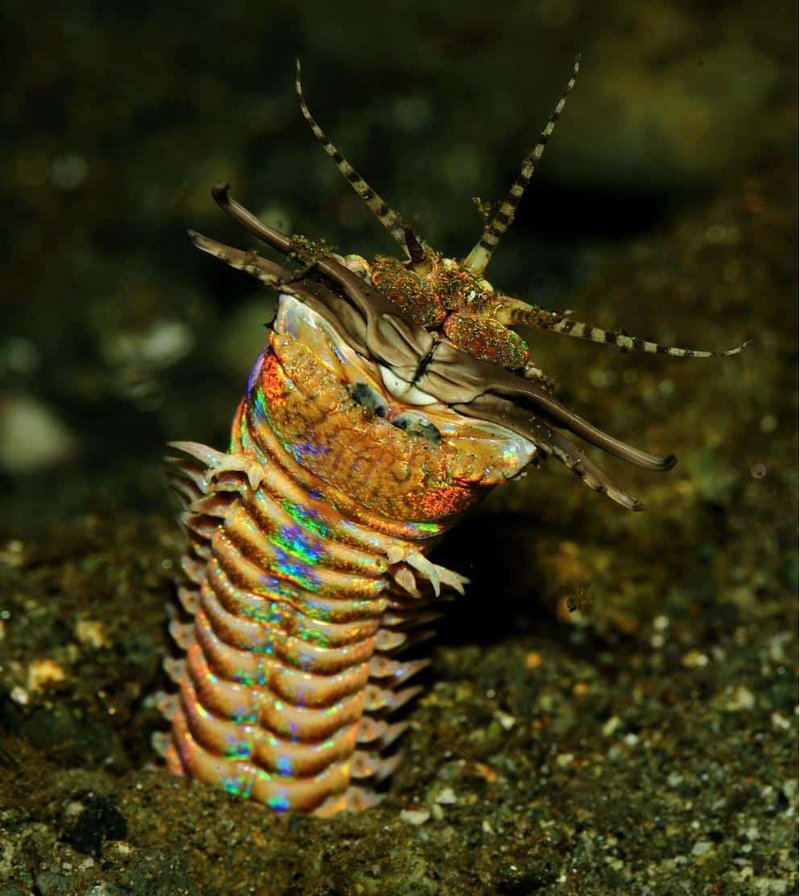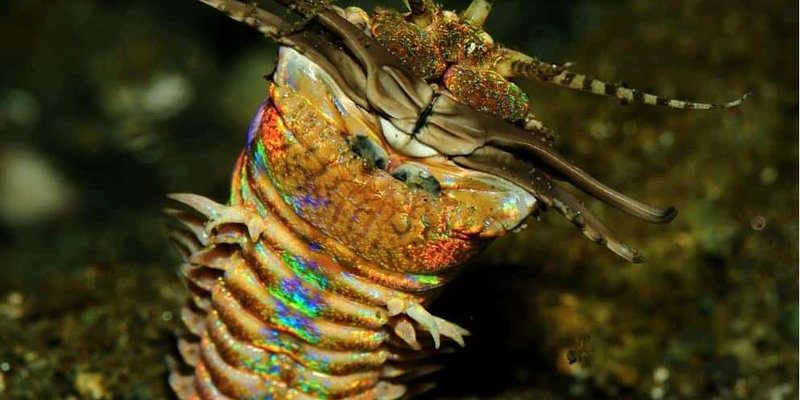
Imagine trying to explain something you’ve never seen. It’s tough, right? This is where images step in. They help bring to life the complex and sometimes bizarre world of marine creatures. Bobbit worms, with their vibrant colors and unique hunting techniques, can spark curiosity and deepen understanding among students and marine enthusiasts alike. In this article, we’ll dive into how these images enhance marine education and why they matter.
What Are Bobbit Worms and Why Are They Unique?
Bobbit worms, scientifically known as *Eunice aphroditois*, are predatory marine worms that can grow up to 10 feet long! They hide in burrows and use long, segmented bodies covered in vibrant bristles to blend into their surroundings. When prey unwittingly comes close, they strike with the speed of a snake, dragging unsuspecting fish or crustaceans back to their lairs.
Here’s the thing: Bobbit worms are not just intriguing due to their hunting style. Their bright colors and unique physical traits make them stand out in the ocean. This vivid appearance is a great visual tool for educators. When students see images of these worms, they can better grasp how they fit into the ecosystem. It’s easier to remember a colorful worm than a bland description!
The Role of Visuals in Marine Education
Visuals play a huge role in education. They can help clarify complex ideas, improve retention, and make learning fun! Think about it: which would you find more engaging—reading a textbook description of a Bobbit worm or seeing stunning images of this creature in its natural habitat?
Illustrations and photographs offer a tangible glimpse into the underwater world. For marine educators, using Bobbit worm images can captivate students’ attention and inspire curiosity. It helps them visualize what they’re learning about, making abstract concepts much more relatable. Plus, they spark conversations, encouraging students to ask questions and explore further.
How Bobbit Worm Images Enhance Understanding of Marine Ecosystems
Understanding marine ecosystems requires a grasp of interconnectedness. When students look at Bobbit worm images, they don’t just see a worm; they also learn about its role in the ecosystem. Bobbit worms contribute to the food web and influence the populations of other marine species.
By including images in lessons, educators can illustrate how these worms interact with their environment. For instance, students can see how Bobbit worms are both predators and prey. This can lead to discussions about biodiversity, habitat disruption, and the importance of every creature in maintaining balance in marine ecosystems.
As students absorb this information, they develop a deeper appreciation for marine life. That appreciation is essential for fostering future conservation efforts.
Engaging Students Through Virtual Resources
With technology evolving, educators now have access to a treasure trove of online resources. Websites, videos, and interactive platforms often feature stunning images of Bobbit worms. Some even offer 360-degree views or animations to illustrate their unique behaviors.
Using these virtual resources, teachers can create engaging lessons that combine images and technology. For instance, a lesson on Bobbit worms could include a short video showing them hunting. This multimedia approach keeps students hooked and makes learning dynamic and exciting.
Moreover, students could be encouraged to research and present their findings using images. This not only reinforces their understanding but also lets them become educators themselves!
Real-World Applications of Learning About Bobbit Worms
So, why does learning about Bobbit worms matter outside the classroom? For starters, understanding these creatures can be vital for marine conservation efforts. As ocean habitats face increasing threats from pollution and climate change, knowledge about all marine life becomes crucial.
When students learn about the Bobbit worm’s role in the ecosystem, they begin to understand the delicate balance of marine environments. They grasp that every organism, no matter how small or strange, contributes to the health of the ocean. This perspective can inspire future scientists and conservationists, helping to foster an environmentally conscious generation.
Additionally, Bobbit worms can serve as indicators of ocean health. Changes in their populations can signal shifts in ecological balance, making them an essential focus area for marine biologists. Teaching students about these connections not only reinforces their education but also empowers them to think critically about environmental issues.
Incorporating Bobbit Worm Images in Curricula
Integrating Bobbit worm images into marine education can be simple and effective. Here are a few ideas for educators:
- Visual presentations: Use images in slideshows to kick off discussions about the marine food web.
- Interactive activities: Organize scavenger hunts in which students find images of various marine creatures, including Bobbit worms, and share interesting facts.
- Art projects: Have students create their own representations of Bobbit worms using various art supplies, helping to reinforce their learning creatively.
The versatility of Bobbit worm images makes them a great asset across various educational levels. Whether in elementary school or higher education, these images can help enhance a deeper understanding of marine biology.
Ultimately, the use of Bobbit worm images in marine education is about making learning engaging and meaningful. They serve as more than just pretty pictures; they are gateways to understanding complex marine environments. By incorporating these visuals, educators can ignite curiosity, foster appreciation, and inspire action toward ocean conservation.
So, the next time you come across a stunning photo of a Bobbit worm, remember: it’s not just a worm; it’s a tool for education that can help shape the future of marine life.

